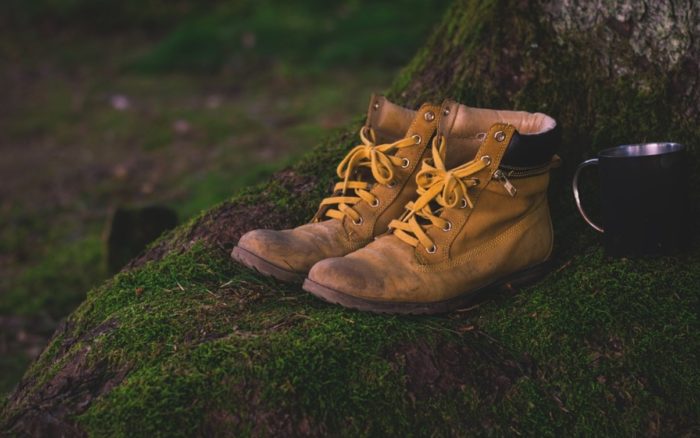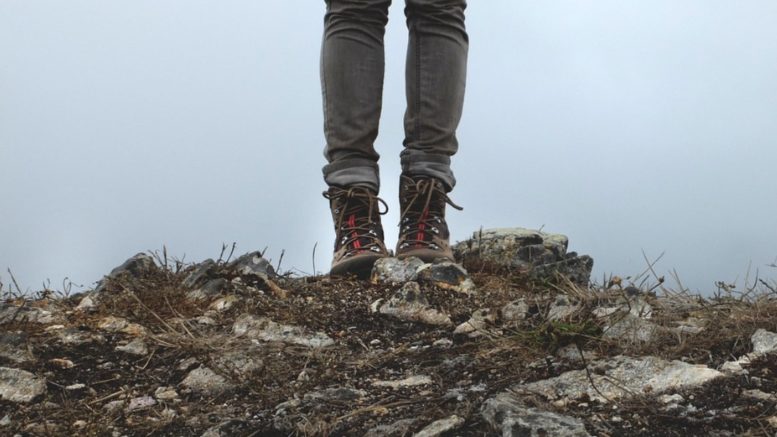Your enjoyment of a long distance hike can be completely ruined if your feet are uncomfortable or painful. Learning how to prepare for long distance hiking with sensible foot care should begin well in advance of your trip.
1. How to Avoid Instep Foot Pain while Walking
Instep foot pain otherwise known as plantar fasciitis is a form of inflammation between the tissues of your feet. It can be a sign of a fallen arch, pes planus, or even a stress fracture.
Both conditions respond well to rest interspersed with stretching exercises and applications of ice but ignoring persistent instep pain could lead to postponing your hiking trip for several months.
An alternative could be consulting with podiatrist experts. They’ll provide superior feet care by taking an impression of your soles to create custom padded inserts to prevent instep foot pain while walking.
2. Finding the Right Shoes for Your Feet
Trudging for miles across the open countryside can be an unwelcome challenge if your hiking boots aren’t comfortable. Hiking sandals are fine in dry conditions but damp, wet or rough ground requires sturdy hiking boots or shoes.
Whenever possible shop for new hiking shoes in person preferably when your feet are swollen late in the afternoon. Always seek advice on being measured. Our feet tend to increase in size as we age so don’t be surprised to find you need a slightly larger boot.
Look for strong rubber soles for excellent grip combined with a flexible midsole for comfortable support. Boots with elasticated gaiters or cuffs prevent rain or stones getting inside. Wear your favourite hiking socks when trying on hiking boots.
3. Foot Care and Ventilation
Letting your feet breathe is an important part of learning how to take care of your feet. Even in cold weather we constantly lose moisture through the soles of our feet. Damp feet can quickly lead to blisters or an outbreak of athlete’s foot, an itchy, irritable fungal infection.
Opt for hiking boots made from a material that breathes. Leather is ideal but many of the advanced synthetic fabrics combine waterproof qualities with breathability. A few hours into your hike give your feet a well-deserved airing and change into a dry pair of socks.
4. Socks Can Help Prevent Foot Pain
Although cotton is a natural fibre with excellent absorption it dries slowly increasing your chances of painful blisters or infection. A superior alternative is a wool. Merino wool is particularly soft and fine-textured.
Synthetic blends specifically designed for athletes are also beneficial. Some long-distance hikers wear two pairs of socks at the same time. The first layer should have excellent wicking qualities and be close-fitting. The outer layer provides additional absorption while comfortably padding your feet.
5. How to Tie Your Boot Laces

Photo © Pixabay
Everyone has their preferred level of tight or loose laces but they need to be tied to prevent your feet slipping as unnecessary friction is the fastest way to a blister. Your heel needs to be held firm but the toe box area should be loose enough for your toes to move about.
Long distance hikers often use a twin-lacing system. Use short laces on the lower area of your boot. Finish off the rest with another pair of laces. Using two pairs allows you to separately adjust the tension over different areas of your feet for an improved fit.
6. Feet Care and First Aid Kits
When preparing for a long hike always assemble ready to use foot care kits for hiking. If you develop a blister you’ll be glad of a soft pad and some athletics tape or sticking plasters. Bandages can slip and increase friction so keep them handy for sprains. Include an antibiotic cream and antiseptic or alcohol wipes.
7. Pamper your Feet before Hiking
Feet benefit from a daily wash. Regularly remove hard skin and calluses with a pumice stone made from solidified volcanic lava. Toenails should be trimmed straight across as sloped edges encourage them to become ingrown. Moisturise with a soothing foot lotion that contains a natural anti-fungal oil of spearmint or peppermint.
8. Hiking in New Boots
If you’ve persevered in finding the right shoes for your feet you’ll want to wear them on your long distance hike. To avoid instep pain while walking break in new boots weeks before your trip. Wear them for a while around the house then on short walks to fetch your groceries.
You can even wear them when consulting with podiatrist experts for advice on feet care and how to enjoy comfortable long-distance hiking without any sign of foot pain.
Author Bio:
Emily Lapm is a freelance writer, working closely with many aspiring thinkers and entrepreneurs from various companies. She is also interested in travel lifestyle and loves sharing her travel experiences through her writing.


Be the first to comment on "8 Foot Care Tips | How to Prepare for A Long Distance Hiking"